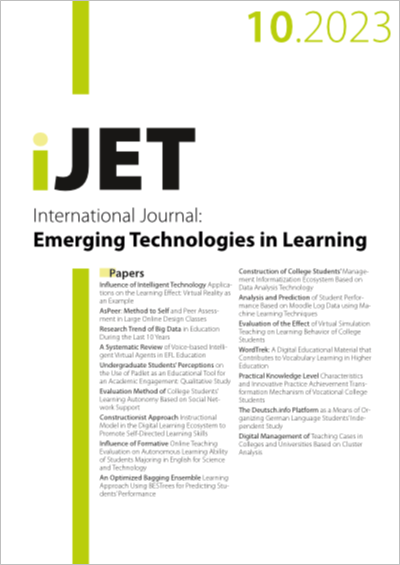Constructionist Approach Instructional Model in the Digital Learning Ecosystem to Promote Self-Directed Learning Skills
DOI:
https://doi.org/10.3991/ijet.v18i10.35431Keywords:
constructionism, digital learning ecosystem, self-directed learningAbstract
Self-directed learning (SDL) skills have become essential in the newly emerging economy and society with advanced technology. The objectives of this study were to develop a constructionist instructional model in a digital learning ecosystem (DLE) to promote SDL skills. The research was divided into 2 phases in terms of instructional design models. The first phase was model development. It involved syntheses of the related literature. The second phase was model validation. This was conducted with the help of 7 experts who had doctoral degrees as well as expertise and experience in instructional design. The results of the model development phase showed that instruction in constructionism consists of 5 stages: challenge, search, design, design, and evaluate. It was also found that a DLE consists of both biotic and abiotic components that trigger interactions within the ecosystem. In addition, SDL skills consist of the ability to be a self-motivated learner, the ability to learn efficiently, and the ability to self-assess one’s learning. The results of the model validation phase showed that all 7 experts agreed that the instructional stages and components of the instructional model developed were extremely suitable. This instructional model can be used in real classrooms and can enhance SDL skills.
Downloads
Published
How to Cite
Issue
Section
License
Copyright (c) 2023 Somsak - Techakosit

This work is licensed under a Creative Commons Attribution 4.0 International License.



